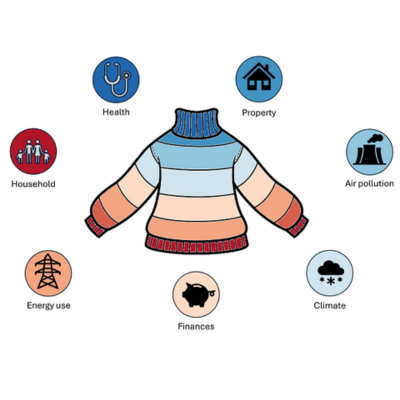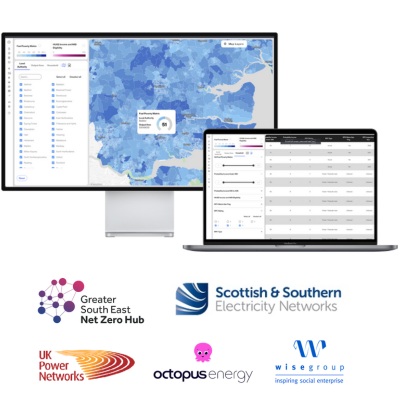For nearly two decades, Gav Jackman has been consulting in the transport software and data space, supporting organisations in their journey to work smarter with the technology they use. Since 2023, Gav has been working with UrbanTide, building partnerships with local authorities and transport organisations across England to show them how our traffic data insights tool, uMove, can transform how they gather, unlock and use their travel data.

We caught up with Gav to find out a bit more about the work he’s doing at UrbanTide and the impact uMove is having on active travel monitoring across the UK so far.
What unique solutions do you think UrbanTide’s traffic data products are currently bringing to the transport sector?
I’ve been working in the transport market for over 15 years, so I understand the issues organisations face with managing, accessing and sharing data.
Perhaps most importantly, I'd say transport organisations and local authorities struggle to unlock insights that their data holds. This is because, while everyone is tracking essentially the same real-time traffic data, every organisation has a different view and format of that data. It's cut differently to suit specific needs.
This is where UrbanTide is playing a crucial and unique role in the current market, as we take quite a different approach. We don't discriminate when it comes to data - we believe the key is to unlock data from any system so it can be used for any purpose and shared openly with the right audience to reveal real and trustworthy insights.
And yes, there are other companies who offer similar solutions, but none offer the flexibility and control that UrbanTide’s solutions do. uMove users have complete control over what data they gather and where the data goes, and the tool offers out-of-the-box insights that they can instantly delve into. UrbanTide have taken a really clear approach to providing a tool that anyone can use to get to insights without the need for any data expertise or coding skills.
How does the data you analyse contribute to improving urban mobility and traffic management in the UK?
Active travel is a big focus for us. The problem with active travel is that it’s very difficult to demonstrate or capture return on investment (ROI).
Monitoring long-term mobility trends and uptake in cycling is a key part of what we do for organisations like Cycling Scotland, and the data insights are already being used to increase active travel across the UK. One of our biggest contributions is providing the data to defend spend and investment on active travel so that more schemes will be built based on the proof of prior or similar schemes' success.
What challenges have you encountered in traffic data monitoring and how do you overcome them?
The biggest challenges we tend to see are related to data maturity. Often, organisations will be working with traffic counters, but if they haven’t been using the feeds for any meaningful purpose, they won’t see the benefits.
For example, they might not realise that coverage by locations doesn’t provide the full picture, that legacy equipment isn’t as reliable as new monitoring technology, or that they have communication failures that haven’t been rectified. Or if they do realise they have these data issues, they can't justify the budget to rectify them as the output just isn't visible.
But at the same time, we don’t see this is a challenge – it’s just part of the process. We take whatever data is available, and through feedback and automated rules, provide evidence to the customer of what needs to be improved, corrected, and maintained. It’s just part of the process in digitising the infrastructure.
And where the data is coming through, we use best-in-class visual mission dashboards to showcase the traffic trends. This helps authorities recognise the value in data and why they should be investing in maintenance of the providing systems.
The second challenge is departmental silos. Parking, public transport, active travel, traffic management/operations, and transport planning – these all tend to be different departments within councils that work separately. To maximise the benefits that UrbanTides’ uMove platform brings, these departments all need to work together. Getting that alignment can be tricky to start off with, but again, we see it as just part of the process. Where we start isn’t where we finish and over time, we bring all the relevant departments together, break down any barriers and achieve results.
Can you share any insights or trends that have emerged from your traffic data analysis with UrbanTide so far that have been particularly significant?
A nice example of active travel trends I like to talk about is urban traffic counters in the centre of Edinburgh. Almost every week, you see the same trend: lower cyclist levels at the weekend, growing from Monday through to Wednesday, and then reducing back down again as we reach the weekend.
It’s easy for an untrained data analyst with no data skills whatsoever to pull this information out of the system and it supports what we know of working patterns since Covid; that people tend to go to the office Tuesday-Thursday and not Monday or Friday. The data also tells us that commuter cycling is more popular than leisure-time cycling.
These are valuable insights when designing schemes and thinking about their aims - especially if route connectivity for commuters is a concern.
To speak to Gav directly about how uMove could help your transport organization unlock traffic data for good, get in touch.






